This post is about the medicinal qualities of Wild hydrangea. These are the native forms of the showy ornamental shrubs.
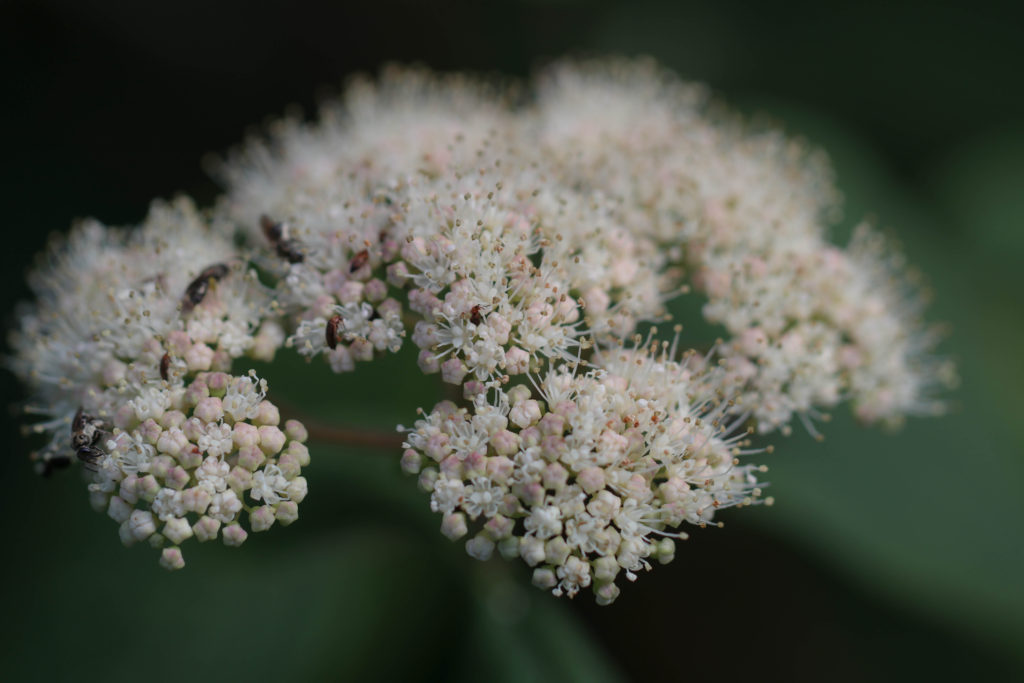
Inflorescence of Ashy hydrangea (Hydrangea cinerea, Hydrangeaceae). Cherokee NF, TN. July 9, 2018
Botanical Information
Family
- Hydrangeaceae (formerly Saxifragaceae)
- There are 9 genera of Hydrangeaceae in the US
Genus species
- Three eastern species are the most commonly used for medicine
- Two were classified as subspecies of Hydrangea arborescens, but are now divided into 3 individual species
- Hydrangea quercifolia (Oakleaf hydrangea) is a fourth species, though I don’t know if it is used medicinally.
- It is likely that all three were used interchangeably
- Hydrangea arborescens-Wild hydrangea
- Hydrangea cinerea-Ash-leafed hydrangea
- Hydrangea radiata-Silverleaf hydrangea
Here are a few different genera of Hydrangeaceae growing in the US
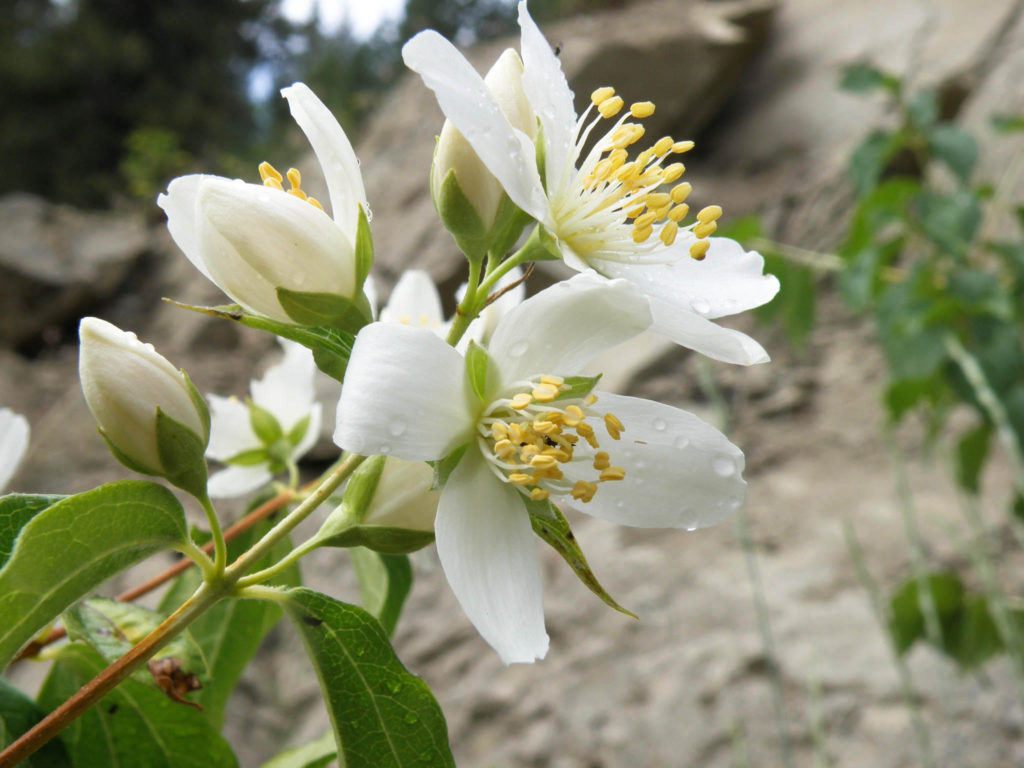
Lewis’s mock-orange (Philadelphus lewisii, Hydrangeaceae) Wenatchee NF, Washington. 
Climbing hydrangea (Decumaria barbara, Hydrangeaceae). Chattahoochee NF, GA. July 6, 2018 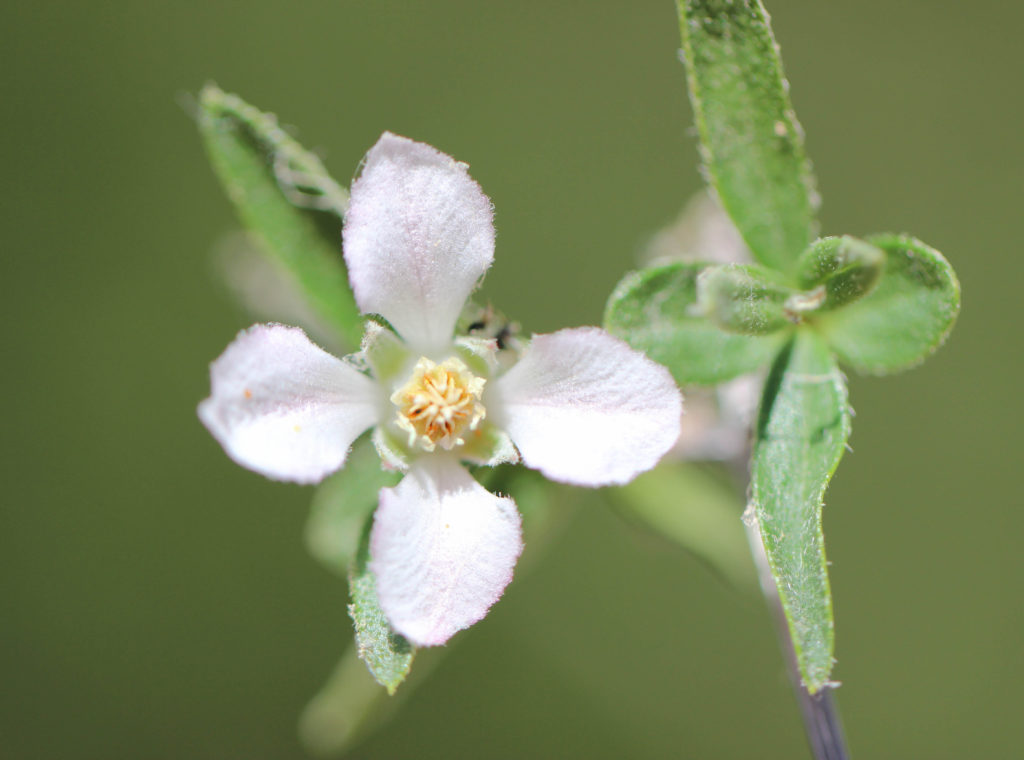
Fendlerbush (Fendlera rupicola, Hydrangeaceae). Glenwood, NM. April 28, 2012
Wildcrafting
Before gathering, learn the differences between the four species and know which ones are most common in any particular area.
Wild hydrangea species are small to medium-sized shrubs and there are four native species that grow in the eastern and Appalachia region of the US. They generally grow on the margins of trails and roadsides or along stream banks.
The root is the medicinal part of the plant. This entailsdigging up the shrubs to gather the root, killing the plant. Hydrangea speciescan be fairly common in their native habitats, so only gather species wherethey are most abundant. I tend to gather from areas where people have already alteredthe landscape, to avoid further disturbing the land. Make sure to fill in thehole after the plant is gathered. With consideration for the environment, Ifeel these plants can be gathered for personal or small-scale use. Be cautiousand environmentally conscientious while gathering to avoid disturbing local populations and vegetation.
Do not gather plants growing along stream banks, as this is more likely to create erosion.
I do not know anyone who uses the cultivated species for medicine nor would I recommend gathering them. Also, if you live in the right ecological niche, some of the native species are quite beautiful to grow (andnot nearly as garish as the cultivated types).
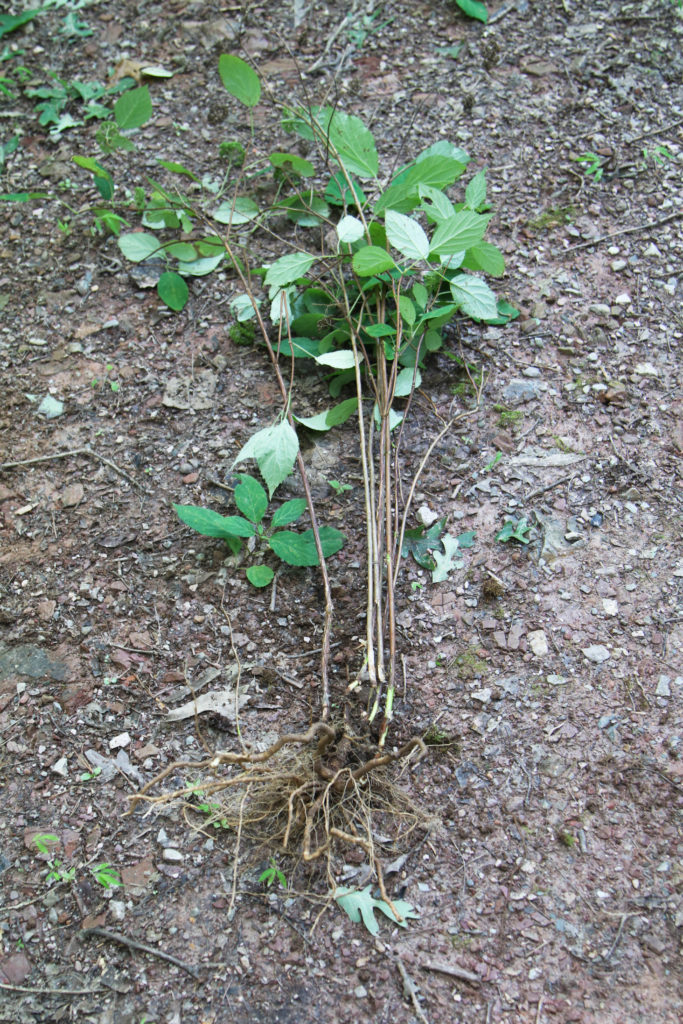
Uprooted Ashy hydrangea (Hydrangea cinerea, Hydrangeaceae). Cherokee NF, TN. July 11, 2018 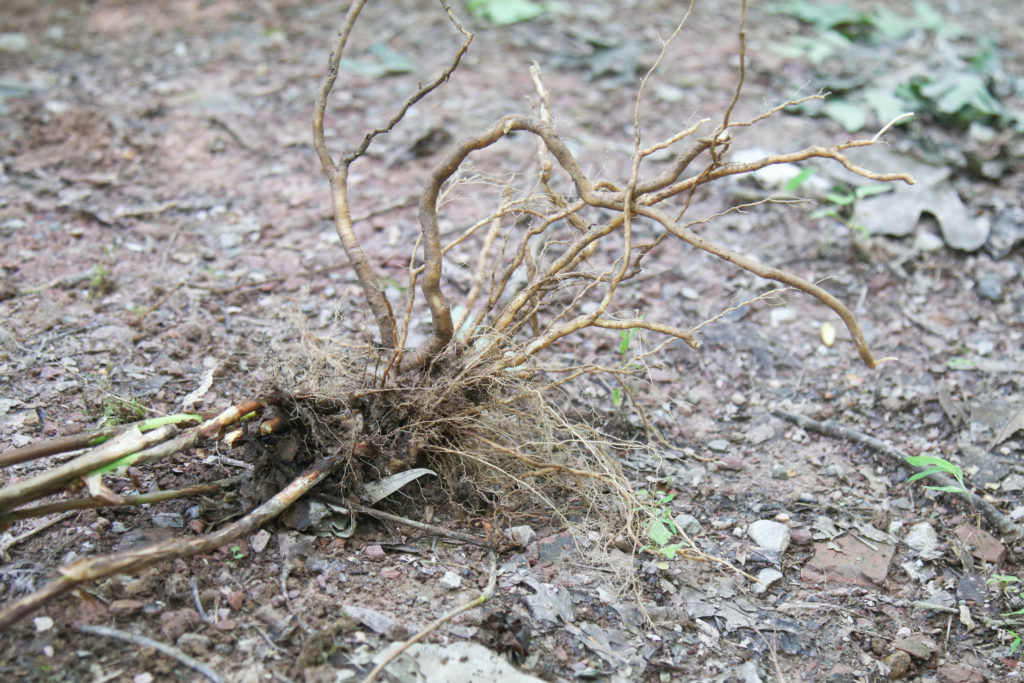
Roots of Ashy hydrangea (Hydrangea cinerea, Hydrangeaceae). Cherokee NF, TN. July 11, 2018 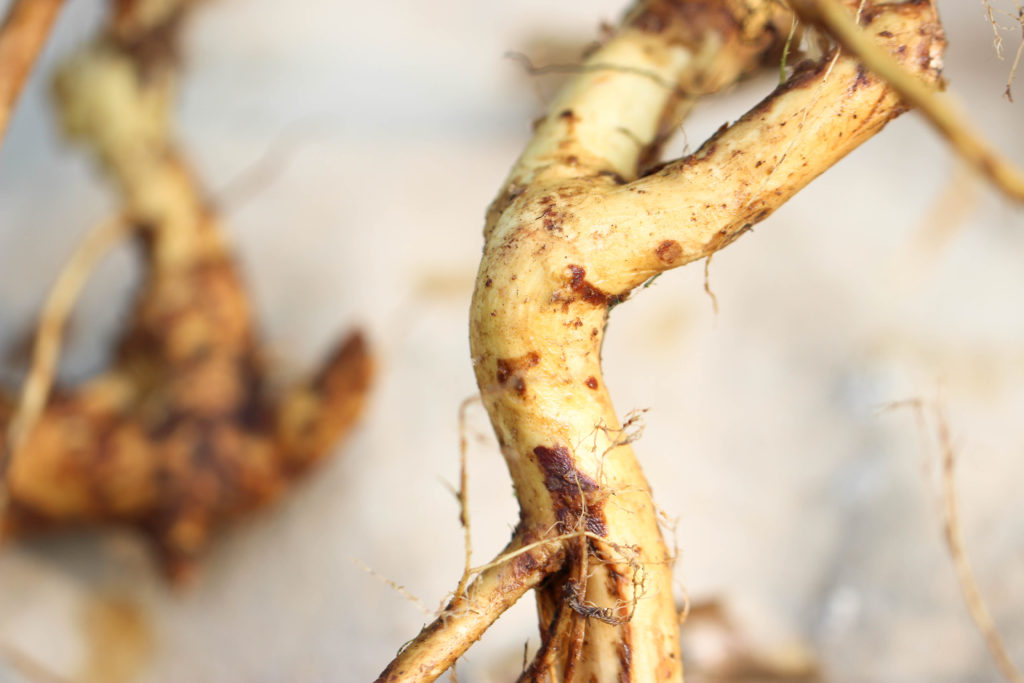
Wild hydrangea root close-up (Hydrangea arborescens, Hydrangeaceae). Barnardsville, NC. 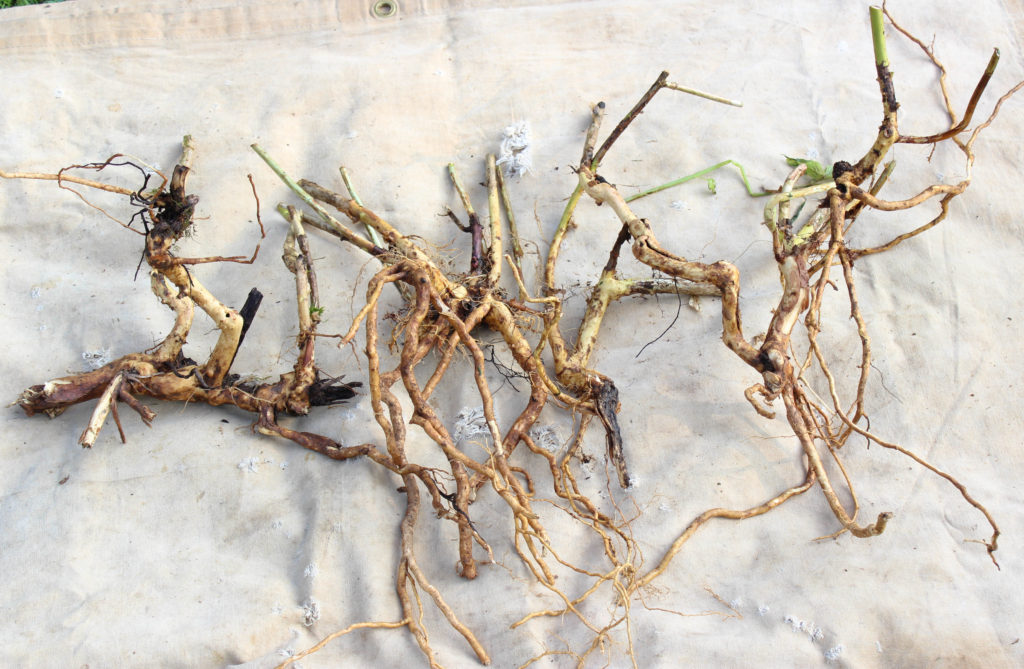
Wild hydrangea roots (Hydrangea arborescens, Hydrangeaceae) Barnardsville, NC
Preparations
- Capsules
- Tea
- Tincture
Primary Medicinal Uses
- Diuretic
- Kidney stones
- Urinary tract infections (UTIs)
- Benign prostatic hypertrophy (BPH)
- Prostatitis
Medicinal Use Details
The main medicinal use for Hydrangea root is as a diuretic, to increase the outflow of urine via the kidneys. Hydrangea root seems most
Kidney stones-the plant does not directly reduce the size of the stones (breaking up the stones), but helps by increasing urine flow thereby reducing the tendency for the stones to gain size making them more difficult to pass. It combines well with other diuretics as well as antispasmodics to help with the pain of passing a stone.
Urinary tract infections-Hydrangea root helps increase the outflow of urine possibly reducing bacteria in the urinary tract as well as carrying other medicinal plants to the source of the infection. It combines well with other diuretics and antimicrobials to help kill the infection.
Benign prostatic hyperplasia (BPH)-increases urine flow and decreases residual urine in the bladder. This can help with nocturia if taken during the day. Combines well with other diuretics and specific BPH plants.
Prostatitis-increases urine flow and decreases residual urine in the bladder. Combines well with other diuretics and antimicrobials to help kill the infection.

Inflorescence of Ashy hydrangea (Hydrangea cinerea) showing the large infertile flowers. 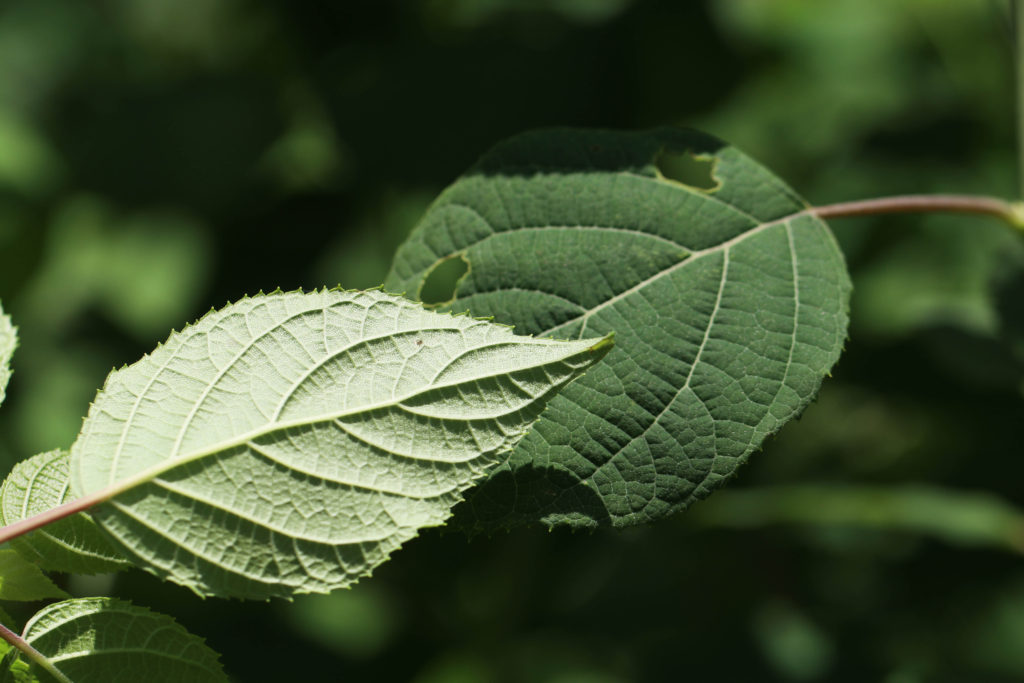
Comparison of light underside and dark top side of Ashy hydrangea leaf (Hydrangea cinerea). 
Ashy hydrangea (Hydrangea cinerea).
Constituents
Hydrangin is the only chemical isolate commonly noted from Hydrangea species. It is more commonly called Umbelliferone, and is a type of coumarin and found in many plant species. It is not known if this is the constituent responsible for the medicinal properties of this plant.
Plant Combinations
- Barberry root-Berberis spp
- Black haw-Viburnum prunifolium
- Cannabis-Cannabis spp
- Corn silk-Zea mays
- Crampbark-Viburnum opulus
- Cranberry-Vaccinium spp
- Dandelion leaf-Taraxacum officinale
- Echinacea-Echinacea purpurea
- Goldenrod-Solidago spp, Euthamia spp
- Gravel root-Eutrochium purpureum, E. maculatum
- Jamaican dogwood-Piscidia piscupula
- Juniper berry/leaf-Juniperus spp
- Lobelia-Lobelia inflata
- Nettle leaf/root-Urtica dioica
- Oregon graperoot-Berberis spp
- Silk tassel-Garrya sppSkullcap-Scutellaria lateriflora
- Stoneroot-Collinsonia canadensis
- Uva ursi-Arctostaphylos uva ursi
- Valerian-Valeriana officinalis
- Yarrow-Achillea millefolium
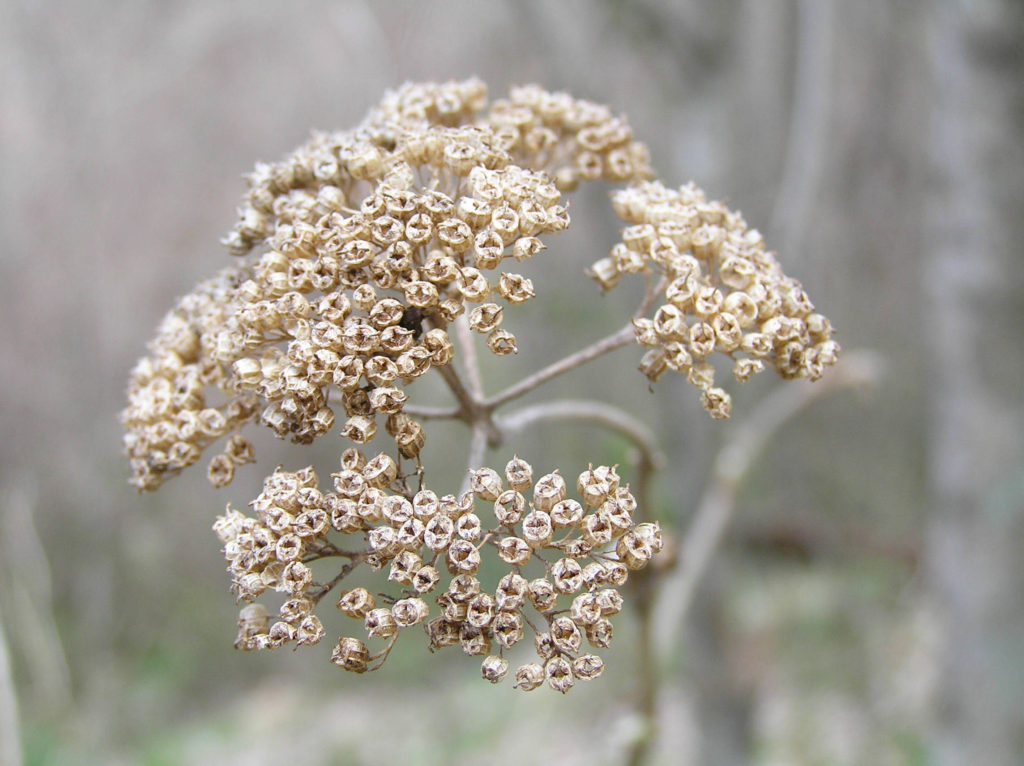
Winter Infructescence of Wild hydrangea (Hydrangea arborescens) 
Wild hydrangea in early spring (Hydrangea arborescens)
Therapeutic Categories
Diuretics-increase urine outflow
- Corn silk
- Dandelion leaf
- Goldenrod
- Gravel root
- Nettles
- Stoneroot
Antimicrobials-kill microorganisms causing infections
- Barberry
- Cranberry
- Echinacea
- Juniper
- Oregon graperoot
- Uva ursi
- Yarrow
Antispasmodics-reduce pain when passing stones or urinating
- Black haw
- Cannabis
- Crampbark
- Jamaican dogwood
- Lobelia
- Silk tassel
- Skullcap
- Valerian
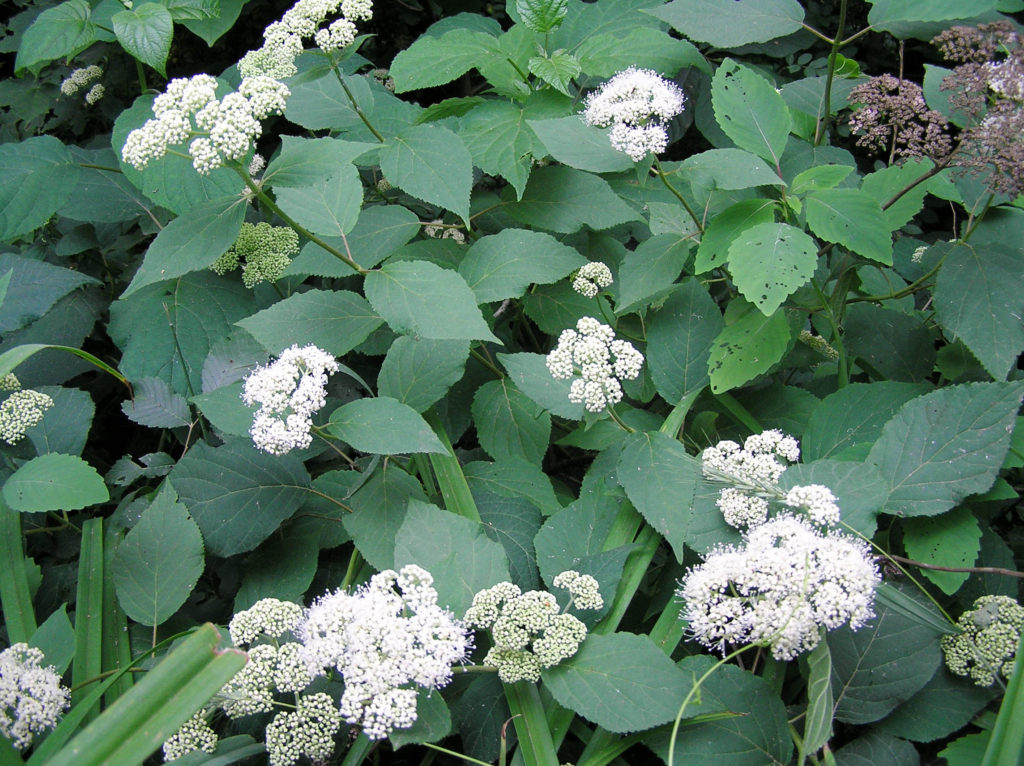
Wild hydrangea shrub (Hydrangea arborescens) 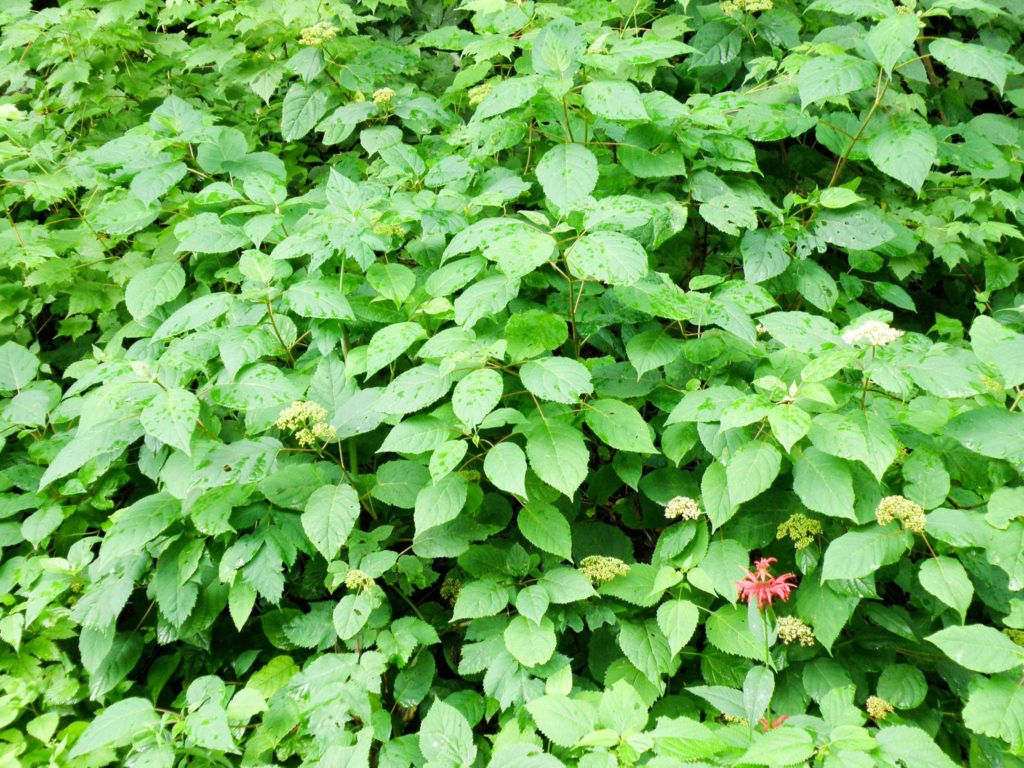
Wild hydrangea (Hydrangea arborescens) 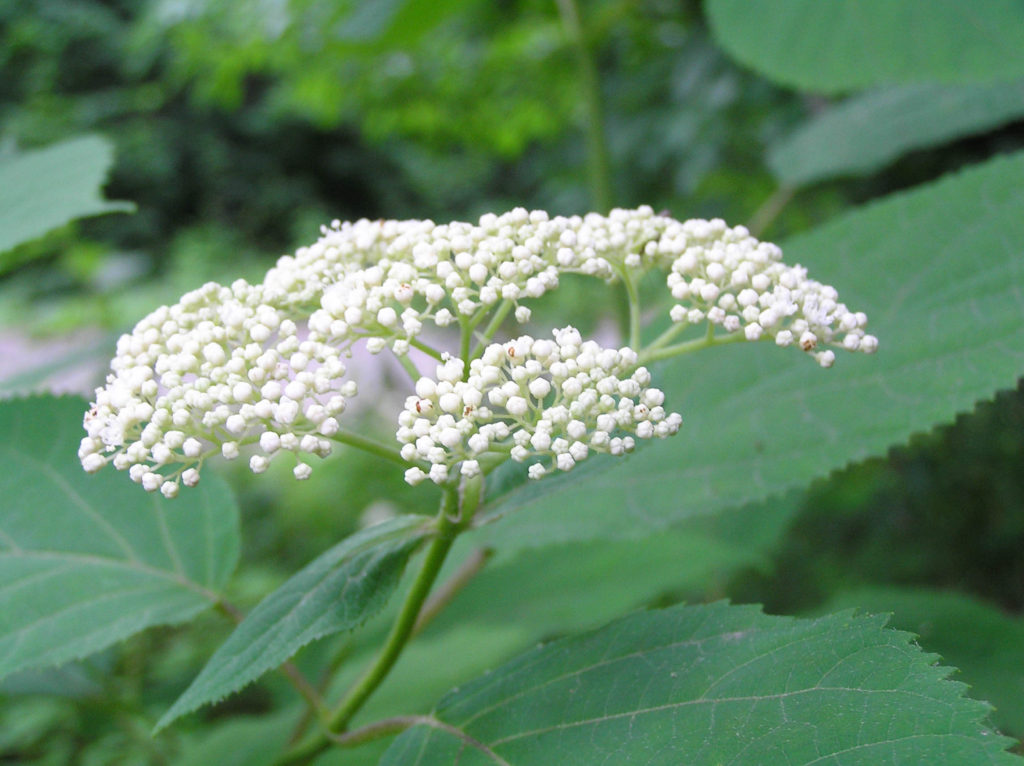
Flower buds of Wild hydrangea (Hydrangea arborescens)
Dosage-these are very approximate dosages which will vary considerably depending on the other herbs in the formula, sensitivities of the patient, and the severity of the problem
Tea
4-8 oz cup 2-3 times daily
Tincture
1-3 dropperfuls 3-5 times daily (2-6 ml, 3-5x/day)
Capsule
2-4 capsules 2-4 times daily
Formulas
These are some basic formulas; the exact plants and the amounts per formula would change depending on numerous factors including severity and individual preferences.
Benign Prostate Formula
- Saw palmetto fruit (Serenoa repens)
- Nettles root
- Hydrangea root
Kidney Stone Formula
- Nettles leaf
- Dandelion leaf
- Hydrangea root
- Gravel root
Prostatitis Formula
- Echinacea root
- Oregon graperoot
- Nettles root
- Dandelion leaf
- Hydrangea root
Urinary Tract Formula
- Oregon graperoot
- Juniper berry
- Corn silk
- Hydrangea root
- Yarrow
Safety
Hydrangea root is generally considered safe and side effects are uncommon. But anytime there is an increased urinary output with a diuretic other problems can
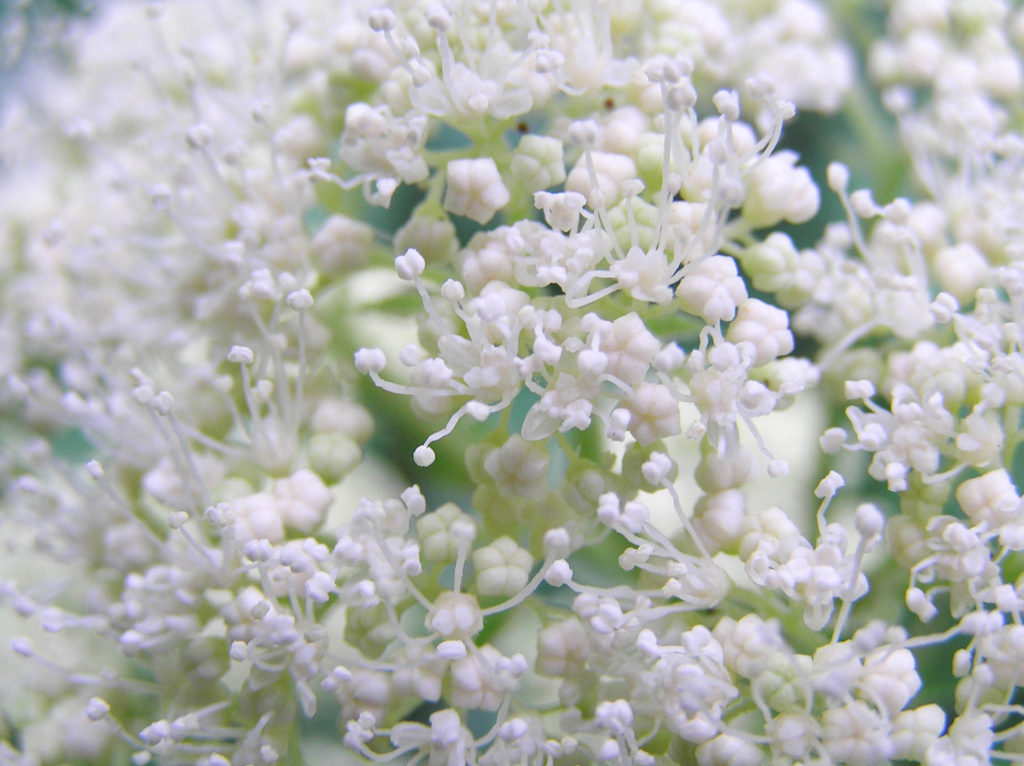
Wild hydrangea flower close-up (Hydrangea arborescens)
